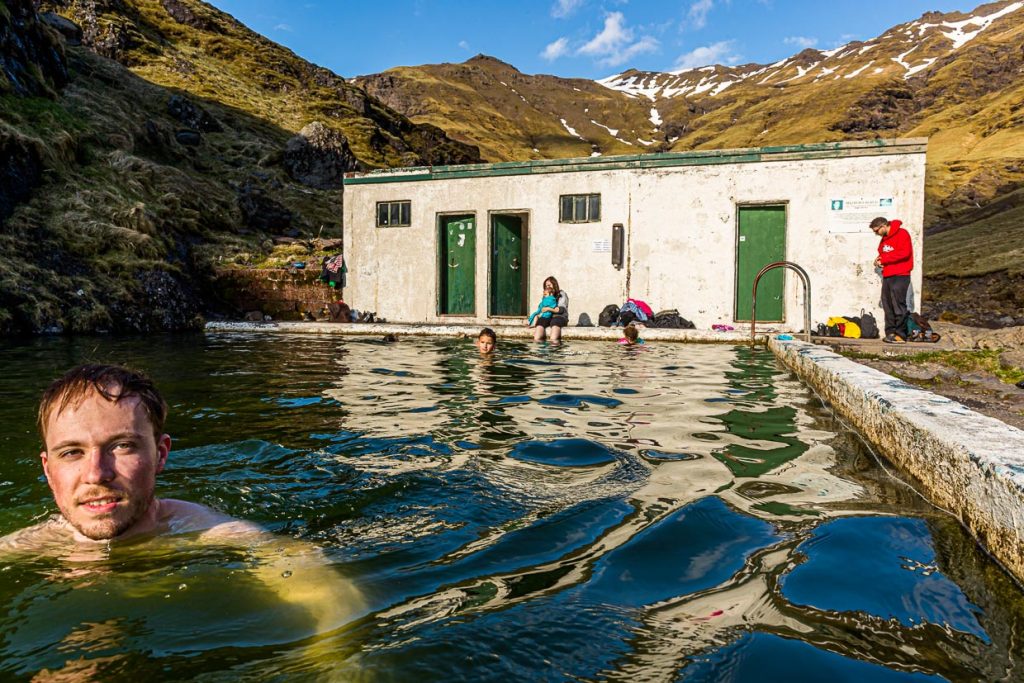
Iceland’s oldest swimming pool is located near Seljavellir at the foot of the Eyjafjallajökull volcano, whose eruption in 2010 disrupted air traffic in the northern hemisphere for a week. Volunteers have since cleared the beautifully situated pool and changing rooms of volcanic ash, so our hike there was well worth it. The pool is unsupervised. In return, it is free to use.
Geothermal energy and glacier water
Fascinating how it bubbles under and on the surface of Iceland. The benefits of geothermal energy can be enjoyed in public pools and hot pots. The water heated by the magma is used in homes for showers as well as for heating without remorse. A few times we had to tear open the windows in our accommodation to bring down the temperature indoors. Using geothermal energy, Icelandic greenhouses grow cucumbers, strawberries and tomatoes year-round. Less environmentally friendly is aluminum production, which has settled in the east of the country thanks to super low energy costs. The best quality is the drinking water. Iceland has the most drinking water per capita in the world. Anyone who has seen the many glacier-fed waterfalls will believe it immediately.
Wondrous Iceland Stories
Magical, mystical, whimsical. On our trip through Iceland, we experienced overwhelming nature, enjoyed the benefits of geothermal energy and tasted many an outlandish dish or of the beer that was only legalized in 1989. In Iceland there are leader sheep, but under no circumstances ponies. Instead, the descendants of the Vikings today have heated sidewalks, still seething volcanoes and a lot of creativity, which in the long dark months is the best recipe against the onset of winter depression. Other Moment Mal episodes are about hairy beer bottles, petrified trolls and wishing stones. Fermented, cruelly stinking Greenland shark contrasts with rye bread baked in hot earth. The whales that regularly appear off Húsavík are a popular photo motif during whale watching.

